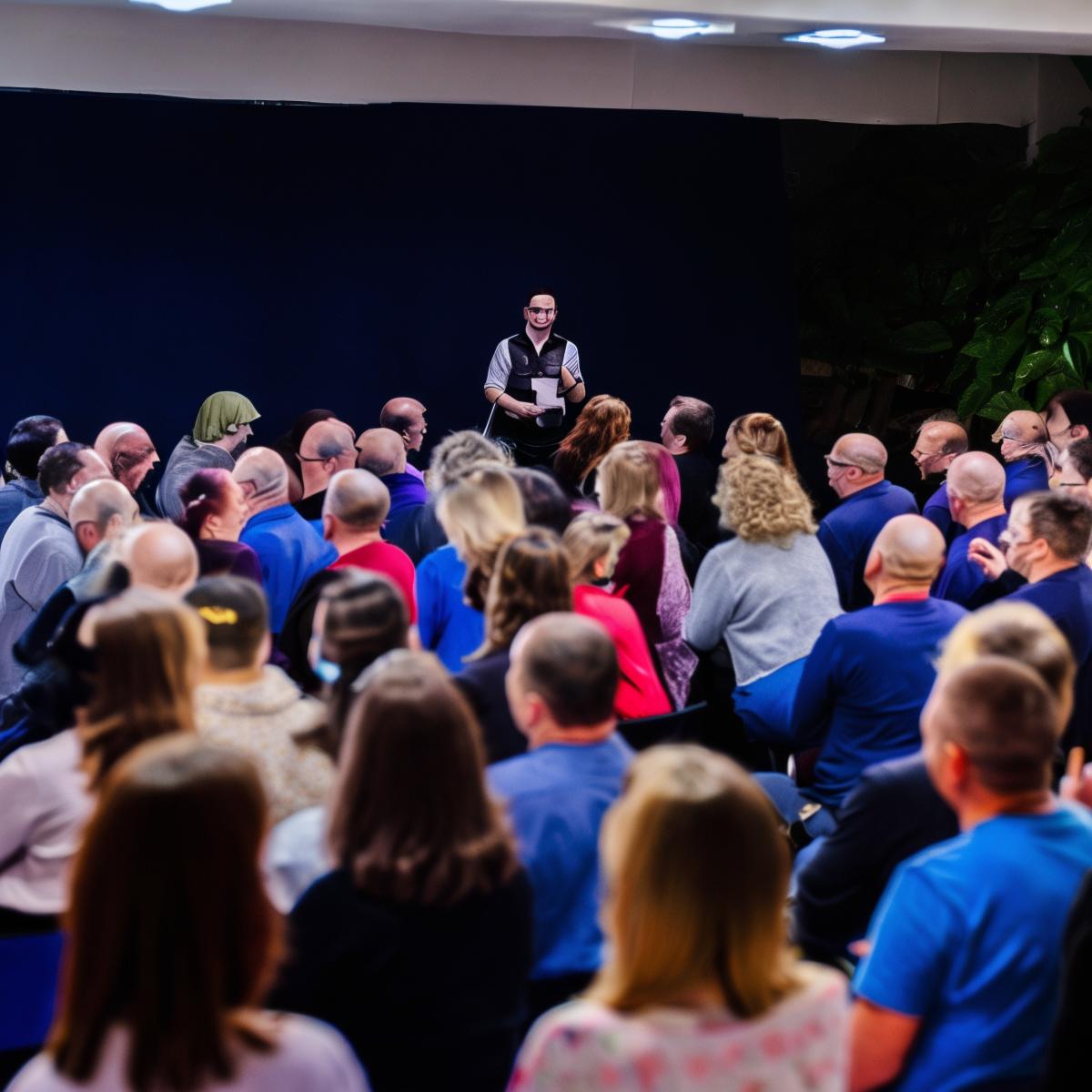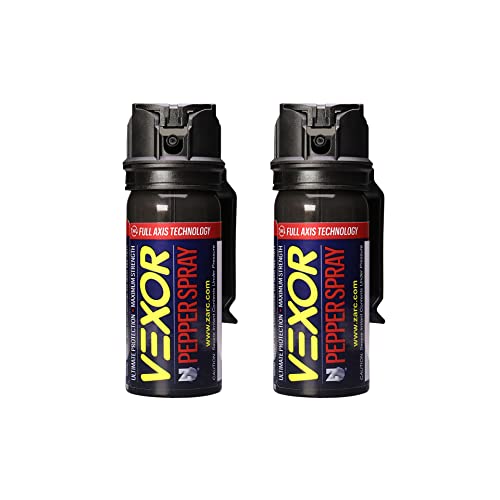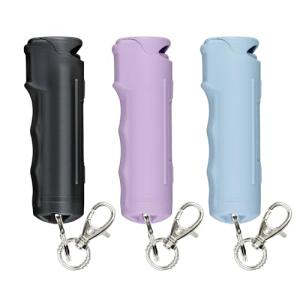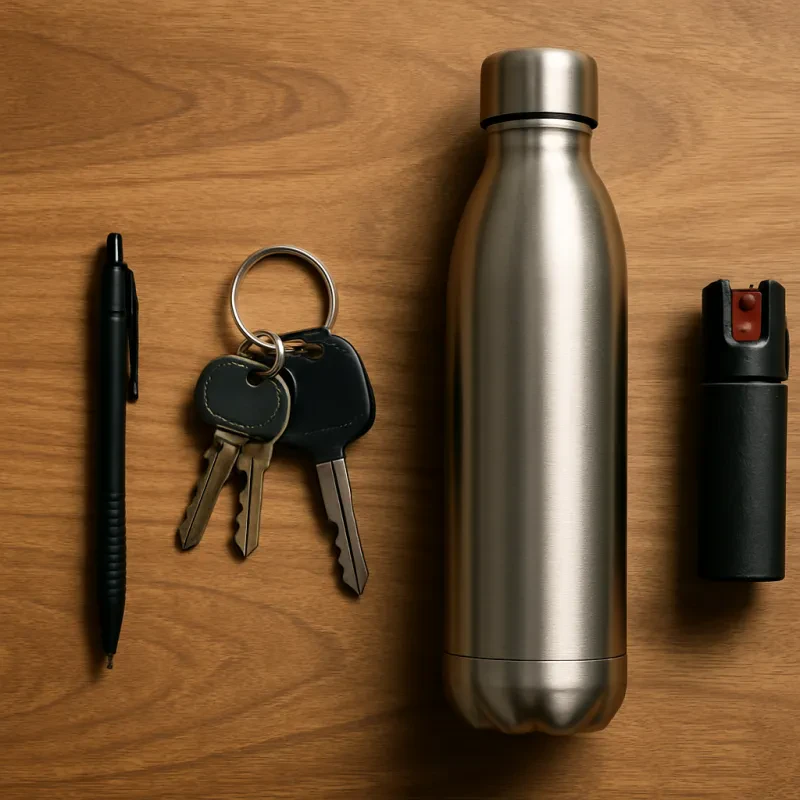Understanding the Risks
Attending large gatherings or events, such as concerts, sports events, or public demonstrations, can be an exhilarating experience. However, it is crucial to recognize the inherent risks associated with these environments. Understanding these risks not only aids in personal preparedness but also significantly enhances one's ability to protect oneself effectively.
One of the primary risks at large gatherings is the potential for violent behavior. This can stem from a variety of sources, including altercations between attendees, disruptive actions by individuals, or even coordinated attacks. Being vigilant and aware of one's surroundings can help identify potentially dangerous situations before they escalate.
Another significant risk is the possibility of stampedes or crowd crushes. These incidents often occur when large numbers of people move simultaneously in response to a perceived threat or in an attempt to leave the venue quickly. The results can be catastrophic, leading to injuries or even fatalities. Recognizing the signs of overcrowding and knowing the nearest exits can be life-saving in such scenarios.
Theft is also a prevalent risk at large events. Pickpockets and opportunistic thieves often target crowded areas, making it essential to keep personal belongings secure. Utilizing anti-theft bags, keeping valuables out of sight, and being cautious of one's surroundings can mitigate the risk of becoming a victim of theft.
Additionally, other safety hazards such as fires, structural collapses, or medical emergencies must be considered. Being aware of the nearest emergency exits, first aid stations, and having a basic understanding of emergency procedures can greatly improve one's safety during such events.
In conclusion, being conscious of the various risks associated with large gatherings or events is the first step toward ensuring personal safety. By understanding these dangers and taking proactive measures, individuals can better prepare and protect themselves in such environments.
Situational Awareness
Staying alert and aware of your surroundings is paramount when attending large gatherings or events. Situational awareness can significantly enhance your ability to protect and defend yourself effectively. One of the first steps in maintaining situational awareness is identifying exits. Upon arriving at the venue, take a moment to locate all the available exits. This knowledge can expedite your escape in case of an emergency, ensuring you have multiple options for a swift and safe exit.
Recognizing suspicious behavior is another critical aspect of situational awareness. Pay attention to any individuals acting out of place or displaying unusual behavior. This could include excessive nervousness, loitering in restricted areas, or carrying bulky items inappropriate for the event. Trusting your instincts in these situations can make a significant difference, as early detection often prevents potential threats from escalating.
Keeping an eye on the crowd's mood is equally important. Large gatherings can sometimes become unpredictable, and the collective mood can shift rapidly. Observe how the crowd is behaving and be mindful of any sudden changes in the atmosphere, such as increased agitation or excitement. These shifts can be early indicators of potential issues or threats, enabling you to take preemptive measures.
Maintaining a clear line of sight is essential for effective situational awareness. Position yourself in a location where you can easily observe your surroundings without obstructions. This strategic placement allows you to monitor the crowd and identify any potential risks promptly. Additionally, avoiding excessive phone use is crucial. While it is tempting to stay connected, constant phone use can significantly diminish your awareness, making you more vulnerable to unforeseen dangers. Prioritize your safety by minimizing distractions and focusing on your environment.
By diligently practicing situational awareness, you can enhance your safety and well-being at large gatherings or events. Being proactive and alert not only helps you identify potential threats but also equips you with the knowledge to respond swiftly and appropriately in any situation.
Personal Safety Essentials
When attending large gatherings or events, ensuring your personal safety starts with being well-prepared. One of the most critical items to carry is a fully charged phone. It serves not only as a communication device but also as a tool for navigation and emergency contacts. Make sure to have important numbers saved and consider carrying a portable charger for extended events.
Identification is another essential item. Carrying a form of ID, such as a driver's license or passport, is crucial for verifying your identity in various situations. Additionally, having some cash on hand is advisable. While many vendors accept electronic payments, cash can be useful in case of technical issues or emergencies.
Comfort and practicality are key when dressing for large gatherings. Wear weather-appropriate clothing and opt for comfortable shoes, as you may need to walk or stand for extended periods. Dressing in layers can help you adjust to changing temperatures throughout the event.
Carrying a small first aid kit can be immensely helpful. Basic items like band-aids, antiseptic wipes, and pain relievers can address minor injuries or discomforts. In crowded settings, accidents can happen, and being prepared can make a significant difference.
For personal defense, non-lethal tools such as pepper spray or a safety whistle can provide an added layer of security. These items are easy to carry and can deter potential threats. Ensure you are familiar with how to use them properly and check local regulations regarding their carrying and use.
By equipping yourself with these personal safety essentials, you can navigate large gatherings or events with greater confidence and security, knowing you are prepared for various situations that may arise.
Traveling in Groups
Attending large gatherings with friends or family members offers numerous benefits, particularly in terms of safety and security. Traveling in groups can provide a sense of reassurance and collective vigilance, significantly reducing the risks associated with being in crowded environments. The presence of familiar faces can be comforting and can help in navigating through the throngs of people more efficiently.
One of the primary advantages of traveling in groups is the ability to set up a meeting point. Given the potential for separation in large gatherings, it is prudent to designate a specific location where everyone can regroup if they become separated. This predetermined spot should be easily identifiable and agreed upon by all group members. It is also beneficial to establish a time frame for checking in at the meeting point to ensure everyone’s safety.
Effective communication within the group is paramount. Utilizing mobile phones, walkie-talkies, or other communication devices can facilitate instant connectivity among group members. It is advisable to share your location periodically and update each other on any changes in plans. Employing a group messaging app can streamline this process, allowing for real-time updates and coordination.
Watching out for each other’s safety is another critical aspect of traveling in groups. Group members should remain vigilant and keep an eye on one another, particularly in unfamiliar or potentially hazardous situations. Establishing a buddy system, where each member is paired with another, can enhance individual safety and ensure that no one is left alone. Additionally, being aware of the surroundings and identifying potential exits can be crucial in emergency situations.
Overall, traveling in groups to large gatherings can significantly enhance personal safety and provide a more enjoyable experience. Through setting up meeting points, maintaining effective communication, and looking out for each other, groups can navigate large events with greater confidence and security.
Basic Self-Defense Techniques
Understanding basic self-defense techniques can be crucial when attending large gatherings or events. In dangerous situations, having the knowledge to protect yourself can make a significant difference. Fundamental self-defense techniques often involve simple yet effective moves designed to help you break free from holds, adopt defensive postures, and use everyday objects for protection.
One essential technique is learning how to break free from various holds. For instance, if someone grabs your wrist, a common method to release their grip is to rotate your wrist towards the attacker's thumb while pulling your arm away swiftly. This exploits the natural weakness in their grip, allowing you to escape quickly. Another technique is the elbow strike, which can be executed by sharply driving your elbow into the attacker's torso or face, creating an opportunity to flee.
Adopting a defensive posture is also vital in self-defense. A balanced stance with your feet shoulder-width apart and your hands up in front of your face can help protect vital areas while allowing you to respond quickly to an attack. This posture not only makes you a smaller target but also prepares you to either defend yourself or escape.
Furthermore, everyday objects can be utilized for protection. Items such as keys, pens, or even a rolled-up magazine can serve as improvised weapons. For example, holding your keys between your fingers while making a fist can transform them into a striking tool. Similarly, using a pen to jab at an assailant's vulnerable areas such as the eyes or throat can provide a means of defense.
While these basic techniques are useful, it is highly recommended to take self-defense classes to build confidence and improve your skills. Professional instructors can offer hands-on training and personalized feedback, ensuring that you are well-prepared to handle various situations. By investing time in learning self-defense, you can enhance your ability to protect yourself and stay safe during large gatherings or events.
De-escalation Tactics
When attending large gatherings or events, the ability to stay calm and utilize de-escalation tactics can be crucial in preventing physical confrontations. Maintaining a composed demeanor is essential as it can significantly influence the outcome of a potential threat. Displaying calmness not only helps in managing the situation more effectively but also reduces the chances of escalating tension.
One effective strategy involves adopting a non-threatening posture. This can be achieved by ensuring an open and relaxed body language, avoiding sudden movements, and maintaining an appropriate distance from the potential aggressor. Making eye contact without staring, and using gentle, non-aggressive gestures can also help in conveying a message of peaceful intent.
Verbal techniques play a pivotal role in de-escalation. When confronted by a potential attacker, it is important to use a calm and steady tone of voice. Acknowledging the other person's feelings and concerns can help in building a rapport and lowering defenses. Phrases such as "I understand you're upset" or "Let's talk about this" can demonstrate empathy and open channels for dialogue. It is crucial to listen actively and avoid interrupting, as this shows respect and can further defuse the situation.
Avoiding provocation is another key element in de-escalation. This entails not responding to insults or threats with similar aggression. Instead, it is advisable to use neutral language and avoid escalating words or actions. If the situation allows, offering solutions or compromises can also be beneficial in resolving conflicts peacefully.
In summary, employing de-escalation tactics such as staying calm, adopting non-threatening body language, using effective verbal techniques, and avoiding provocation can significantly enhance one's ability to protect and defend oneself at large gatherings or events. These strategies not only help in managing potentially volatile situations but also contribute to a safer and more harmonious environment for all attendees.
Evacuation Strategies
In the event that an urgent evacuation becomes necessary at a large gathering or event, it is crucial to have a clear and actionable plan. The first step is to quickly locate the nearest exits. Upon entering any venue, take a moment to identify multiple exit points. This knowledge can significantly reduce evacuation time and increase your chances of a safe escape.
When an evacuation is triggered, promptly head towards the nearest exit. If the situation involves smoke, such as in the case of a fire, it is essential to stay low to the ground. Smoke rises, and staying low can help you breathe cleaner air and avoid inhaling harmful fumes. Cover your nose and mouth with a cloth, if possible, to further reduce inhalation of smoke or other hazardous particles.
Avoiding a stampede is another critical aspect of an effective evacuation strategy. Panicked crowds can quickly become dangerous. To prevent being caught in a stampede, move swiftly but do not run. Maintain a steady pace and be mindful of your surroundings. Avoid pushing others, as this can lead to dangerous falls and injuries for yourself and those around you.
Remaining calm is perhaps the most important aspect of any evacuation strategy. Panic can cloud judgment and lead to poor decision-making. Trust official instructions provided by event personnel or emergency responders. They are trained to manage such situations and will provide guidance on the safest routes and procedures to follow.
In summary, effective evacuation strategies at large gatherings or events hinge on quick identification of exits, staying low in smoky conditions, avoiding stampedes, and maintaining a calm demeanor. By following these steps and adhering to official instructions, you can enhance your safety and the safety of those around you during an emergency evacuation.
Post-Incident Actions
After an incident occurs at a large gathering or event, it is crucial to take immediate steps to ensure your safety and well-being. The first step should be to report the incident to the appropriate authorities. Whether it involves local police, security personnel at the venue, or event organizers, timely reporting can help in documenting the event accurately and initiating necessary actions. Provide a detailed account of what transpired, including any relevant information such as descriptions of individuals involved, time, and location of the incident.
Seeking medical attention is equally important, even if injuries seem minor. Sometimes the adrenaline rush can mask pain or injury, making it essential to get a thorough check-up from healthcare professionals. This not only ensures your physical well-being but also serves as medical documentation that could be useful for legal or insurance purposes.
Moreover, offering support to others who may have been affected by the incident can be a compassionate and unifying action. Whether it’s providing emotional support, helping them contact authorities, or directing them to medical services, your assistance can make a significant difference in their recovery process.
Processing the experience is a critical step often overlooked. Emotional and psychological well-being is as important as physical health. Experiencing an incident at a large event can be traumatic, and it is essential to acknowledge the emotional impact it may have. Seeking professional help from a counselor or therapist can provide coping mechanisms and support for dealing with any trauma. Engaging in open conversations with friends or family members about the experience can also be therapeutic.
In summary, post-incident actions should prioritize safety, well-being, and support. Reporting the incident, seeking medical attention, offering help to others, and addressing emotional impacts are all vital steps in ensuring a comprehensive approach to recovery and defense in the aftermath of an event.







